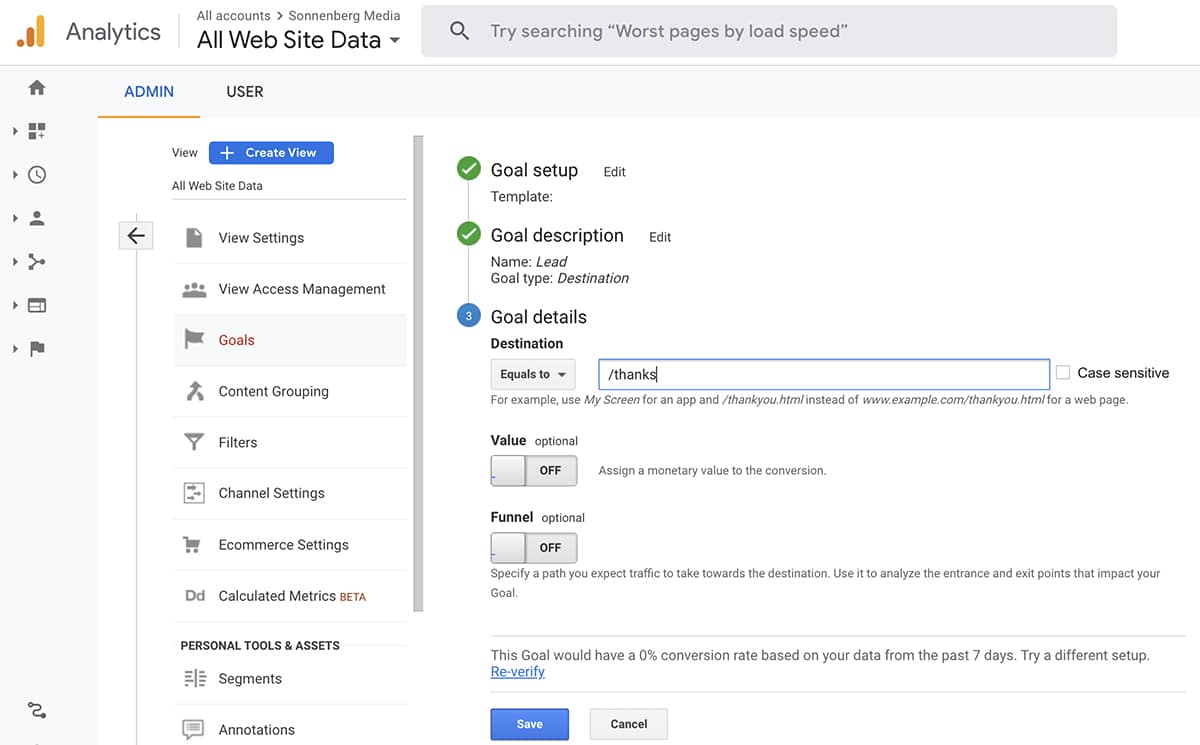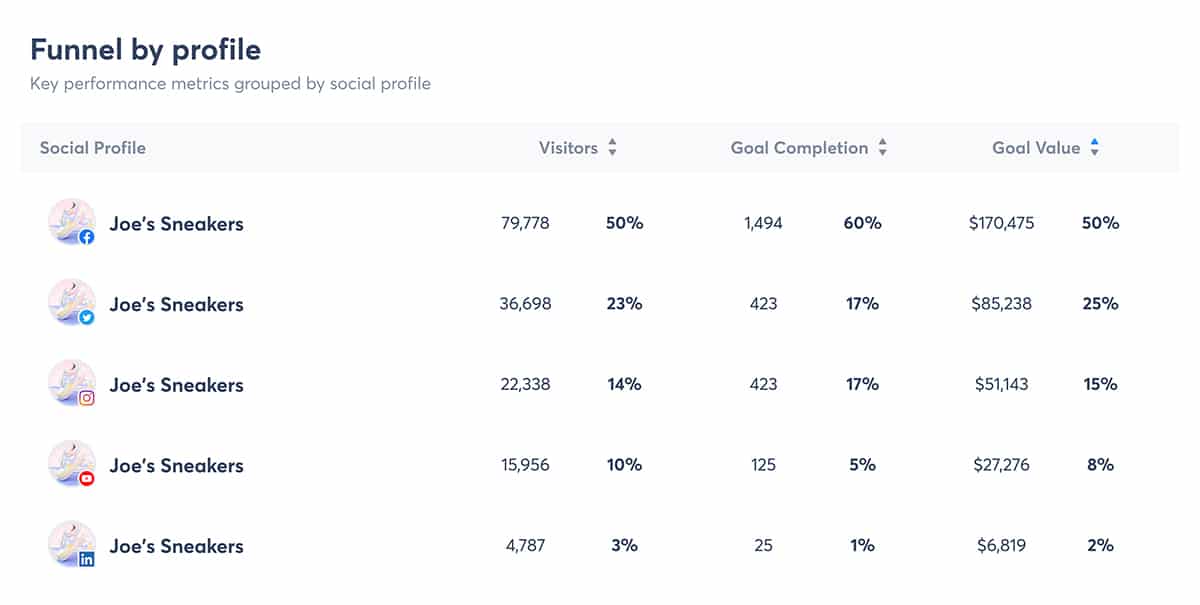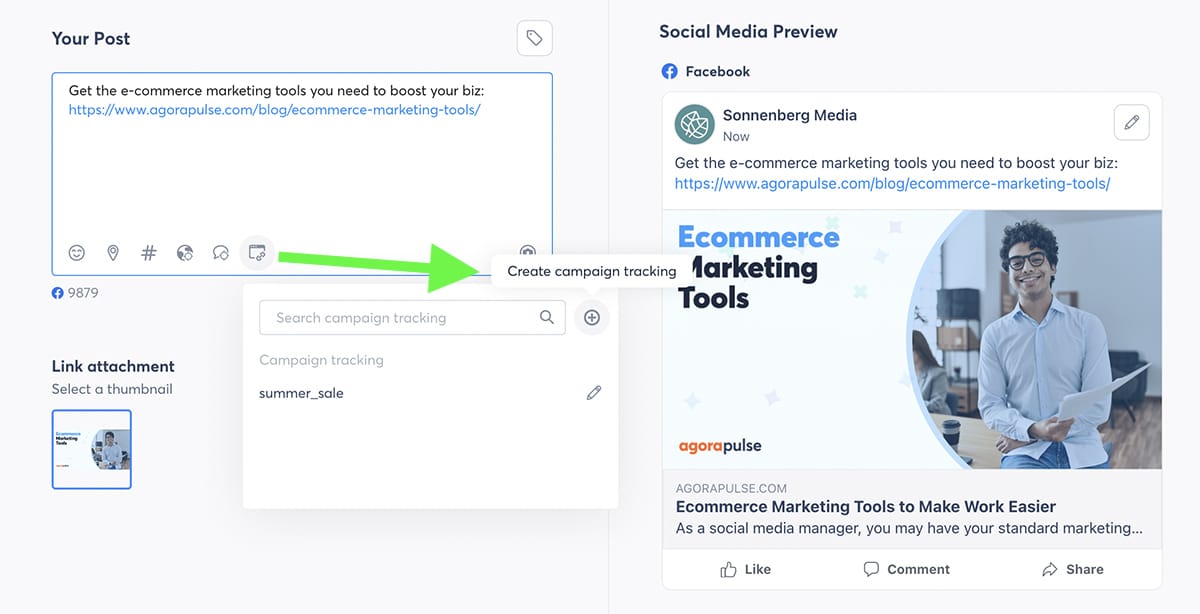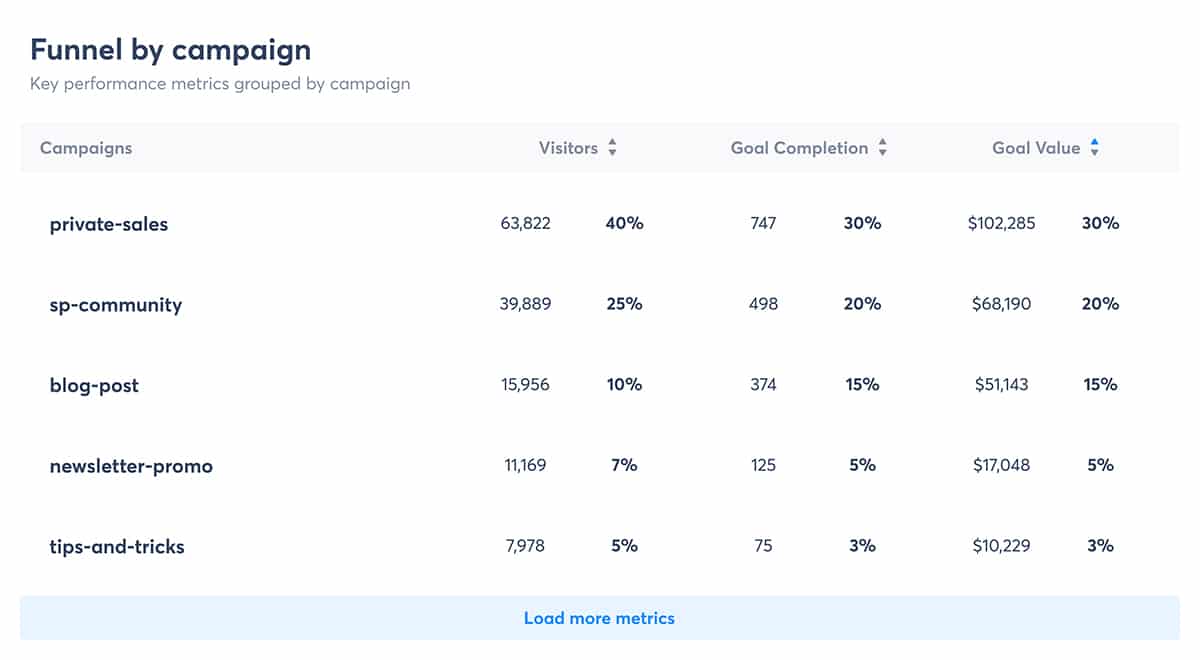As a social media marketer, you’re responsible for meeting a long list of objectives. Return on investment (ROI)—which compares the investment in a marketing campaign to the profit from it—is likely at the top of that list.
Whether you aren’t hitting your goal, or your boss or agency client wants a better return, you need to know how to increase this metric. Fortunately, a wide range of tactics can help you achieve the ROI you want to see.
Let’s look at how to improve ROI in digital marketing, from which metrics to monitor to which tools to use.
What’s a Good Digital Marketing ROI?
To measure digital marketing ROI, you need to know how much you’ve spent on a campaign and how much you’ve gained from it. Depending on the nature of your campaign, your budget could include such elements as:
- Organic content creation
- Social media ads
- Influencer partnerships
- Marketing tools and platforms
Once you’ve tallied up your marketing spend and profit, use the following formula to calculate ROI:
Digital Marketing ROI = (Sales Growth – Marketing Cost) / Marketing Cost
So, is your digital marketing ROI good, bad, or OK? Most marketers consider a 5:1 ROI good, meaning you earned five times more than what you spent on your campaign.
If your ROI is 10:1 or higher, you’re generating an exceptional return.
But if your ROI is closer to 2:1 or even 1:1, you have room for improvement.
4 Steps to Take Before Optimizing ROI
Before you test out ways to increase social media ROI, make sure you’re measuring and tracking ROI correctly. Follow the steps below to get started.
1. Set up tools to measure ROI
If you’re new to measuring marketing ROI, start by setting up a few essential tools. Let’s walk through setting up Google Analytics and linking your property to Agorapulse.
Configure Google Analytics
First, follow these steps to install Google Analytics on your website. You’ll need to create a new property and add the tracking code to your website.
Once you’ve set up Google Analytics, you can customize the tool for your website. From the left-hand menu, select Admin. Then choose Goals from the View menu.
Click the New Goal button and click Continue to use a goal template. Give the goal a name, Then choose a type. If your goal requires people to navigate to a separate page—such as a confirmation page—select Destination. For the goal details, enter the URL slug.
If the conversion has a defined value, switch the Value toggle on. Then input the dollar amount for the conversion. Now, you can see conversion rates and values for every goal.
Note that if you’re monitoring online transactions, using Google Analytics’ e-commerce tools is much more efficient. You can use them by opening the Admin panel and selecting Ecommerce Settings from the View menu. Switch on Enable Ecommerce and follow the instructions to complete the setup process.
Link Google Analytics to Agorapulse
Once you’ve set up conversion and ecommerce ROI tracking for your business, you can start monitoring results from the Google Analytics dashboard. But if you aren’t an experienced data analyst, you could lose a lot of time attempting to navigate Google Analytics.
To streamline the process and calculate ROI more efficiently, link your Google Analytics property to Agorapulse. Open the ROI tab, and click the gear icon in the upper right. Then add your Google Analytics account and select the property you want to integrate.
Your conversion and ecommerce goals will automatically appear in Agorapulse. Instead of having endless menus and options to navigate, you can find the data you need, neatly displayed in easily shareable reports.
2. Use campaign-tracking tools
Google Analytics automatically tracks the source of all your website traffic. You can check the Acquisition tab in Google Analytics to see whether social media, organic search, or other channels are driving the most visitors and value.
On the Agorapulse ROI dashboard, you can easily see which social channels and even which landing pages are generating the most traffic and revenue. To see channel-by-channel breakdown, scroll to the bottom of the dashboard.
As useful as this report is, it doesn’t help you calculate ROI for specific campaigns. To get this type of breakdown, use UTM parameters when publishing campaign content.
Agorapulse makes it easy to add UTM parameters to organic content. First, open the Publish tab and create a post with a link. Click the Shorten & Track Link button in the post composer. Then click the plus icon to create campaign tracking.
Give the campaign a name and customize the UTM parameters. Then click the Apply button and finish publishing or scheduling the post. You can click to add the same tracking details to multiple posts so you can attribute ROI and other conversions to the correct campaign.
Once your campaign content publishes, you can track the results in the ROI dashboard. Scroll down to the Funnel by Campaign chart to view the visitors, completed goals, and goal value for each social media campaign you’ve run.
3. Benchmark your marketing ROI
Now, you can determine your ROI more efficiently. Plug the revenue metrics from your Agorapulse ROI dashboard into the formula above to calculate your return from specific campaigns or certain time frames.
Calculating ROI for past campaigns or time periods is about more than just collecting historical data. When you review the ROI of your past digital marketing efforts, you can measure your progress over time.
You can also identify what a typical outcome is for your business.
For example, you can calculate your digital marketing ROI for the past year and break it down by month. Using those insights, you can benchmark ROI per month. That way, you’ll know what’s normal for your business and what to expect for future months.
You can also benchmark ROI per campaign. In many cases, digital marketing campaign ROI will depend on the type, goal, and timing. That means your typical return may vary dramatically from campaign to campaign. But you can still use your insights to set benchmarks for certain campaign types, objectives, or time frames.
4. Decide on a digital marketing ROI goal
Without benchmarks, you’ll find knowing what your marketing campaigns can achieve difficult. But once you’ve identified performance standards, you can set SMART goals for your business. With goals that are specific, measurable, attainable, relevant, and time-based, you can plan your campaigns and measure your progress more effectively.
Use your ROI benchmarks to guide the goals you set for future campaigns. Did your past seasonal sale campaigns generate at least 5:1 ROI? If you create a new campaign with a similar method, time frame, and budget, you can reasonably expect a similar return.
Do you want to set a more ambitious goal for your marketing campaign? Consider increasing the ad budget or extending the time frame to improve your return. Alternatively, try the tactics below to improve your digital marketing ROI.
How to Improve ROI in Digital Marketing: 6 Strategies
Now that you’ve set up the basics, let’s look at how to improve ROI in digital marketing.
Check out six strategies to use for your campaigns.
1. Monitor the right ROI metrics
Whether you’re running paid or organic campaigns, you can be tempted to focus on vanity metrics. As the name suggests, vanity metrics often look exciting. But in reality, they’re empty measurements that don’t tell you anything of value about your campaign results.
In some cases, putting energy into tracking vanity metrics can distract you from focusing on social media metrics that matter. As a result, they can compromise campaign performance and use critical resources.
Which measurements are vanity metrics? It depends on your campaign goal.
For example, if your objective is growing your audience, followers is an essential campaign metric. But if your goal is getting more leads, measuring followers becomes a distraction—or a vanity metric.
When you want to improve ROI, you should know which metrics to track and which to ignore. In most cases, the key metrics for your campaign should align with your business goal. For example, if your business goal is getting more sales, revenue is the most important metric to track.
Keep in mind that you can track more than one metric per campaign. Just make sure that each one is relevant to your goal.
In the example above, other important metrics to track might include conversion rates and click-through rates (CTR). Both help you understand how many people have taken steps toward making purchases—the ultimate goal.
2. Identify areas for improvement
One of the best ways to increase ROI is to find underperforming metrics and take steps to improve them. To identify areas for improvement, you’ll have to understand the journey your customers take prior to purchase.
For example, a typical customer may visit your website three times before making a purchase. If your content isn’t getting many clicks or if your CTR is low, you should consider how to improve website visits first.
To drive website visits in a logical way, think about three pages that would be helpful for potential customers to see. You may want to invite them to visit a blog post, a comparison page, and a product page.
Using custom audiences, you can create a paid social funnel that retargets people who have visited the previous page. Then you can create a conversion or sales campaign that retargets people who have visited all three pages.
By creating a multi-step funnel that addresses areas in need of improvement, you can streamline the process that customers take from awareness to conversion. In doing so, you can improve the overall ROI from your digital marketing campaigns.
3. Create higher-value content
In some cases, potential customers may not respond to your posts the way you’d hoped. As a result, the ROI from your paid and organic campaigns may decrease. To improve your results, create higher-value content using one of the two tactics below.
Revisit your social media messaging
Do you suspect that your social media captions aren’t resonating with potential customers? Consider revisiting your brand voice and your method for creating social media copy.
Read through customer comments and messages to see how your audience speaks and the language they use. Then rework your copy to talk with customers in a way more likely to resonate with them.
In addition, include calls-to-action (CTAs) that prompt people to do something. For example, you might urge them to click a link to read more or to start shopping now.
Publish content customers want
Does most of your social media content consist of product or service pitches? Your posts may not offer enough value or help customers get the information they need.
Review customer comments and messages to identify frequently asked questions (FAQs). Then create content that answers those FAQs. For example, you might share tutorials to help customers get started with your products. You might create videos for more advanced users.
By giving customers what they’re looking for, you can encourage them to trust your brand. You can also help customers get more value from your products, which can increase purchases and ROI.
4. Test different offers
If you always pitch the same offer for your product or services, you may find that interest gradually wanes. Even if you find that ROI stays consistent, you may miss out on opportunities to improve this metric.
By testing new offers, you can see what resonates best with customers. You can also discover new ways to drive more revenue, lower costs, and increase ROI.
Here are a few offers to test out and compare against benchmarks:
- Free shipping
- Limited-time discounts
- Limited-quantity products
- Coupon codes for subscribers
- Special sales for loyal customers
5. Experiment with new channels
Your brand doesn’t necessarily need a presence on every digital marketing channel. But if you’re only using one or two channels, you could be missing out on a lot of leads and sales.
To improve your ROI, research new channels or avenues to test. For example, if you’re only using Facebook, channels like Instagram or Twitter may help you build your brand. Or if you’re only using organic social media, a paid campaign could increase your results dramatically.
Not sure which social media marketing channels are right for your company? Start by creating a buyer persona that reflects your ideal customer. Then research the types of users that each social media channel tends to attract.
You can also use competitive research to identify the channels that other brands in your industry use. For example, if your competitors are building massive audiences on YouTube, consider including this channel in your social media strategy.
6. Leverage marketing automation tools
For many brands, improving ROI centers on reaching more people, getting more clicks, and driving more revenue. But sales is just one part of the ROI equation. Decreasing your costs can also have a significant impact on your digital marketing ROI.
One of the best ways to reduce costs is to decrease the number of manual tasks your team does. The fewer repetitive tasks you have to handle, the less time you need to spend on marketing campaigns.
In some cases, that means fewer people can do the same amount of work. In other cases, it means your team can free up time to dedicate to higher-value tasks—like developing more effective digital marketing strategies.
So how can you eliminate manual tasks and save money? Marketing automation tools can handle repetitive tasks. Some automation tools to consider include:
- Facebook chatbot plugins integrate with your website and prompt visitors to ask questions. Conversations appear in your Facebook inbox, where you can manage them alongside DMs.
- Facebook Ads Manager automated rules control your paid campaigns within the parameters you set. You can set rules to turn off underperforming campaigns to save money. You can also scale up successful campaigns to drive more revenue.
- Agorapulse Inbox Assistant moderates your social media engagement based on the rules you set. You can set up automations to remove spam, assign comments to specialists, or label messages from qualified leads.
What We Learned About How to Improve ROI in Digital Marketing
From monitoring the right metrics to testing new tactics, you can take steps to improve ROI in digital marketing. If you measure ROI, identify areas for improvement, and experiment with new efforts on a long-term basis, you can continue to improve this metric for your company or agency clients.
Sign up for a demo today to learn more about how Agorapulse can help you prove your value to your clients.










